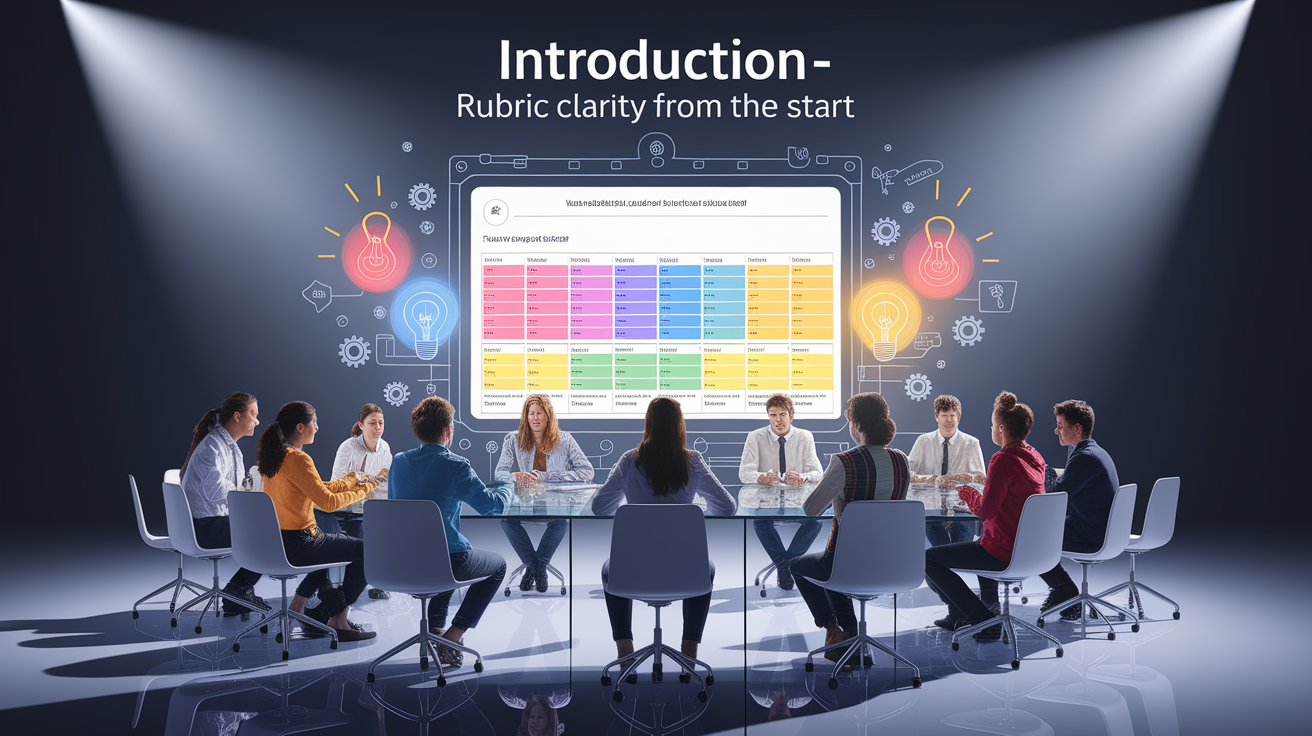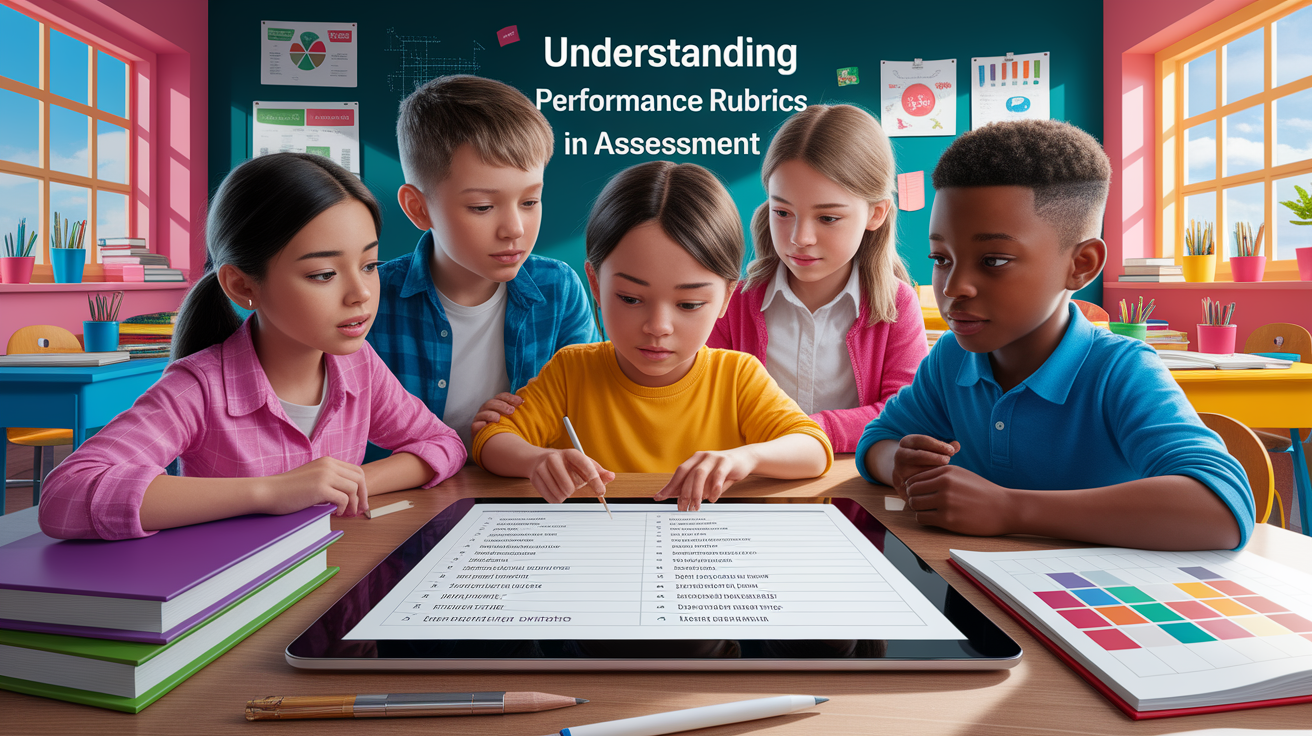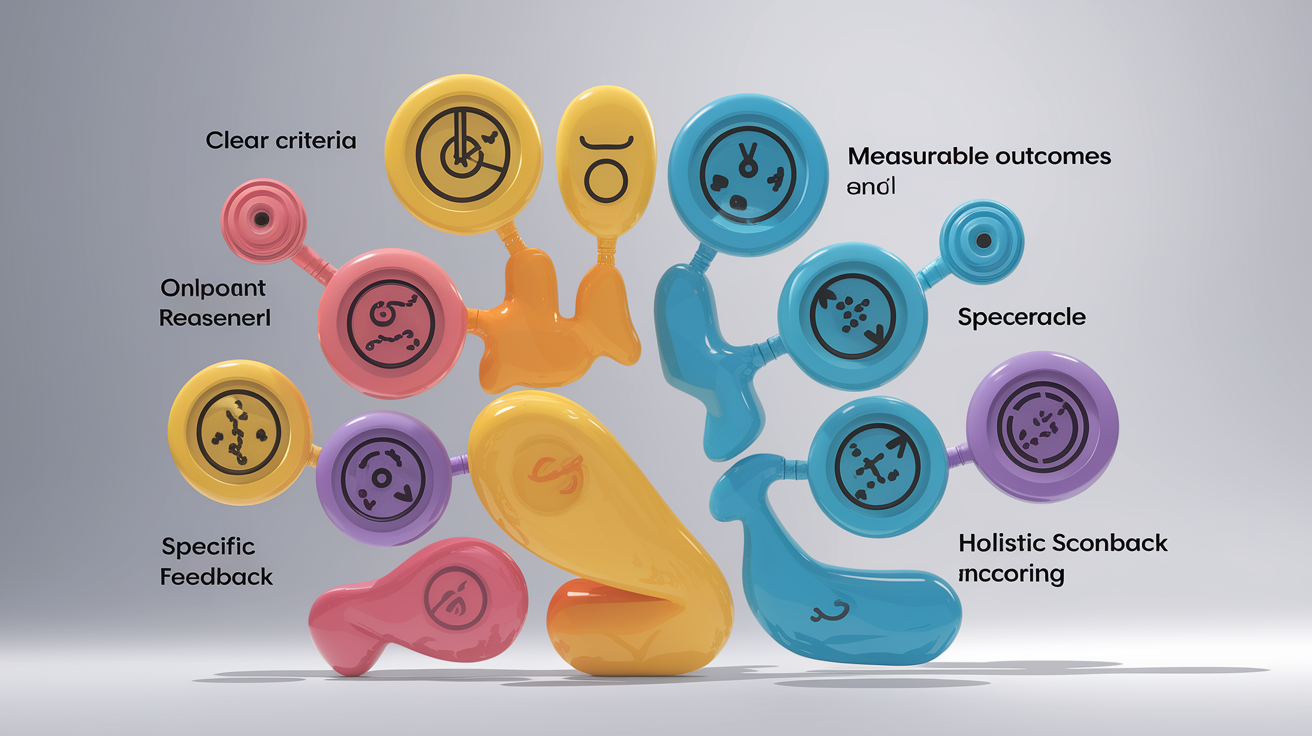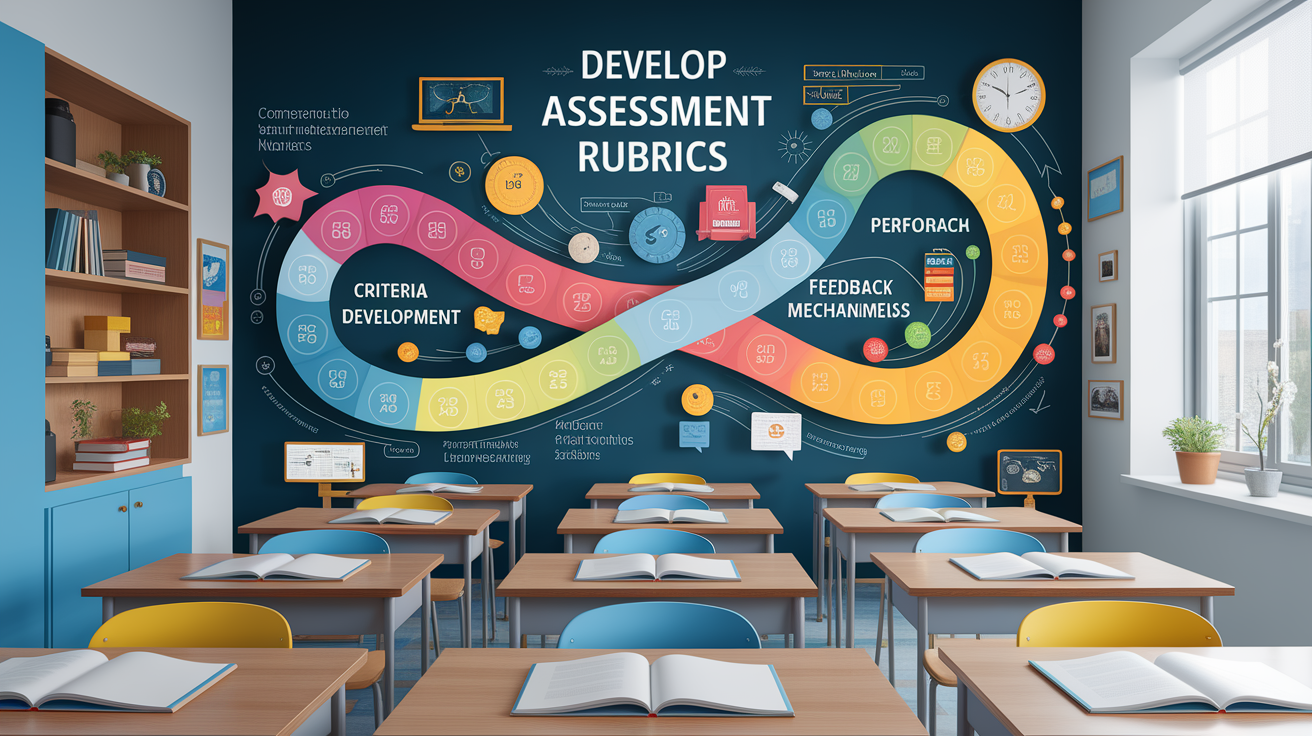Introduction – Rubric Clarity from the Start
Imagine walking into a class where the expectations are crystal clear from the very beginning — no guessing games, no mystery grading. That’s the power of a well-crafted performance rubric. As teachers, our rubrics can be the friendly roadmaps that guide students through their learning journey, ensuring everyone knows exactly what success looks like. This isn’t about making assessment boring or rigid — it’s about giving students the confidence to perform at their best by showing them clearly how their work will be evaluated.

Understanding Performance Rubrics in Authentic Assessment
Before we dive into building rubrics, let’s unpack what we mean by authentic assessment and how performance rubrics fit in. Authentic assessment focuses on students applying knowledge and skills to meaningful, real-world tasks — think designing a marketing plan, conducting a scientific experiment, or staging a debate. Rubrics serve as trusty companions here, giving transparent assessment criteria for these multifaceted tasks. As explained in this guide on authentic assessment, rubrics highlight essential performance indicators like creativity, problem-solving, and judgment, helping students understand and meet the expectations of realistic and engaging assignments.

Key Components of Effective Performance Rubrics
A performance rubric isn’t just a checklist; it’s a structured tool that captures the richness of student work. The most effective rubrics include:

- Clear criteria – Specific descriptions of performance standards aligned with learning objectives.
- Performance levels – Definitions for different levels of achievement, often in holistic rubrics or analytic rubrics.
- Alignment – Connection to competencies, skills, or learning standards outlined in course design.
- Student-friendly language – Vocabulary that students understand, promoting self-assessment and ownership.
- Reliability and validity – Ensuring consistent scoring across evaluators and that the rubric measures what it intends to assess.
By including these components, a rubric transforms into a reliable educational measurement tool, guiding both formative assessment and summative assessment contexts.
Steps to Develop Authentic Assessment Rubrics
Creating a performance rubric for authentic assessment can be a fun, creative process if you follow these structured steps:

- Identify the task’s purpose – Make sure it mirrors real-world applications, as noted in authentic assessment principles.
- Define learning outcomes – Clarify the skills, knowledge, and behaviors students should demonstrate.
- List the criteria – Focus on important aspects of performance, from accuracy to collaboration.
- Decide on rubric type – Use holistic rubrics for overall performance or analytic rubrics to break tasks into components.
- Describe performance levels – Provide concrete examples for each level to enhance clarity.
- Test and refine – Pilot your rubric with peer assessment or self-assessment and adjust for alignment and fairness.
Best Practices for Using Performance Rubrics
Rubrics are most powerful when used proactively. Here’s how to get the most out of them:
- Share rubrics early – Let students know the scoring rubrics before they start work to promote strategic planning.
- Integrate into feedback – Use rubric language in your comments to reinforce student learning.
- Encourage self-assessment – Ask students to score themselves against the criteria, fostering deeper reflection.
- Align with assessment design – Ensure consistency between rubric criteria and intended learning objectives.
- Update regularly – Revise rubrics as your course goals evolve or as tasks change.
Educators who embrace these practices often see improved student achievement because learners clearly understand what’s expected and how they can achieve it.
Common Pitfalls and How to Avoid Them
Even the most well-intentioned rubrics can go astray. Here are frequent mistakes and how to sidestep them:
- Vague criteria – Avoid fuzzy descriptions like “good” or “well done.” Specify observable behaviors instead.
- Overcomplication – Too many criteria can overwhelm both you and your students. Keep it focused.
- Misalignment – If the rubric doesn’t match the task or learning objectives, it loses assessment validity.
- Inconsistent application – Train all evaluators on how to use the rubric to ensure assessment reliability.
- No student input – Involving students in rubric creation boosts ownership and clarity.
Conclusion – Rubric Mastery for Meaningful Assessment
Performance rubrics are more than grading tools — they’re the bridges connecting authentic assessment tasks to transparent expectations and fair evaluation. When we design them thoughtfully, we empower students to take charge of their learning, understand their progress, and aim for higher performance standards. As teachers, let’s embrace the art and science of rubric creation to make every learning experience both meaningful and measurable.




